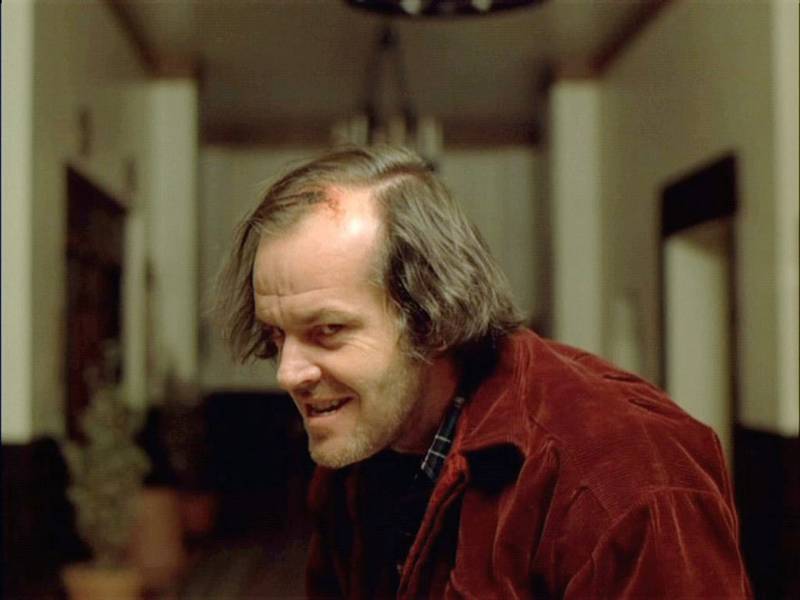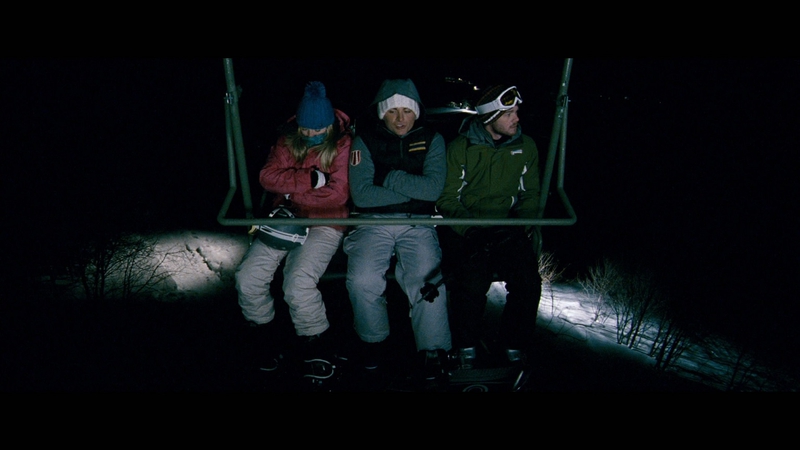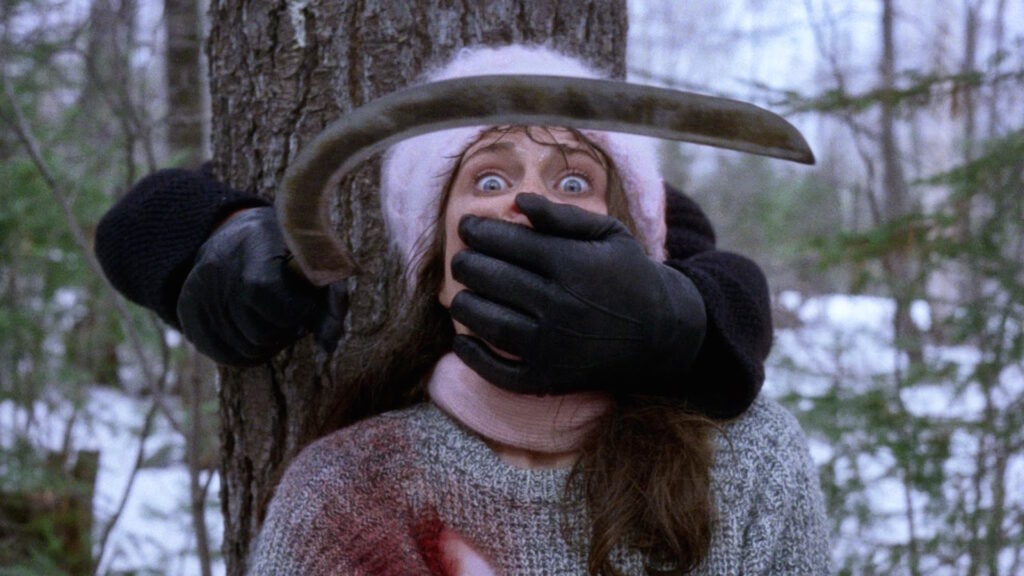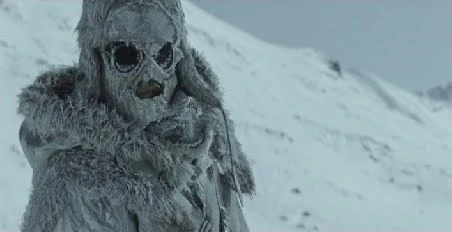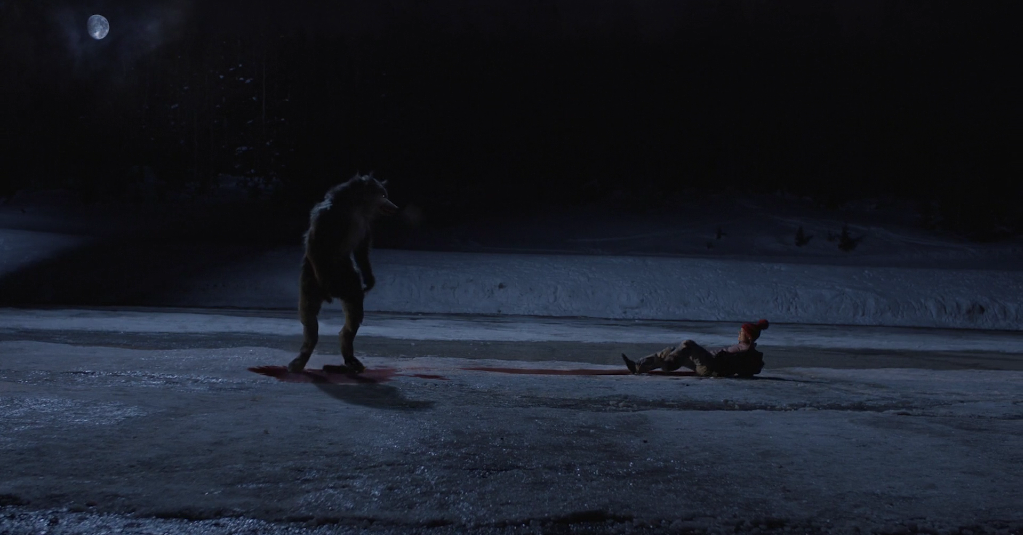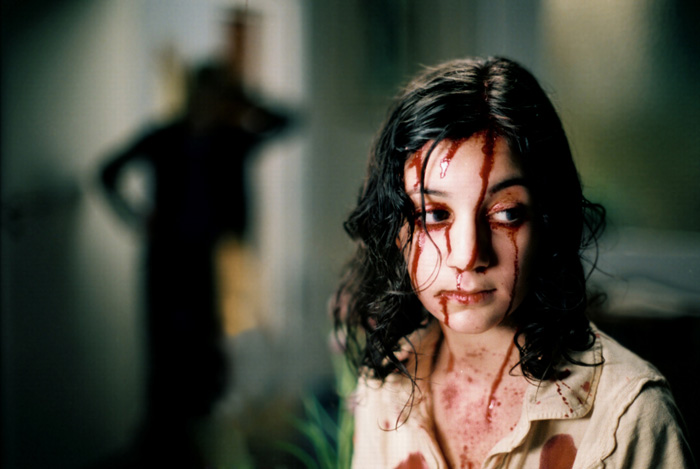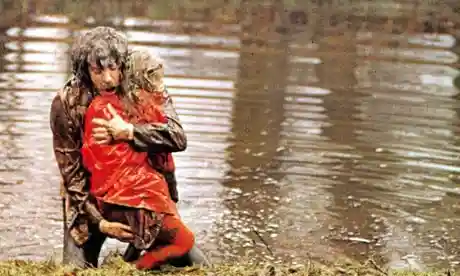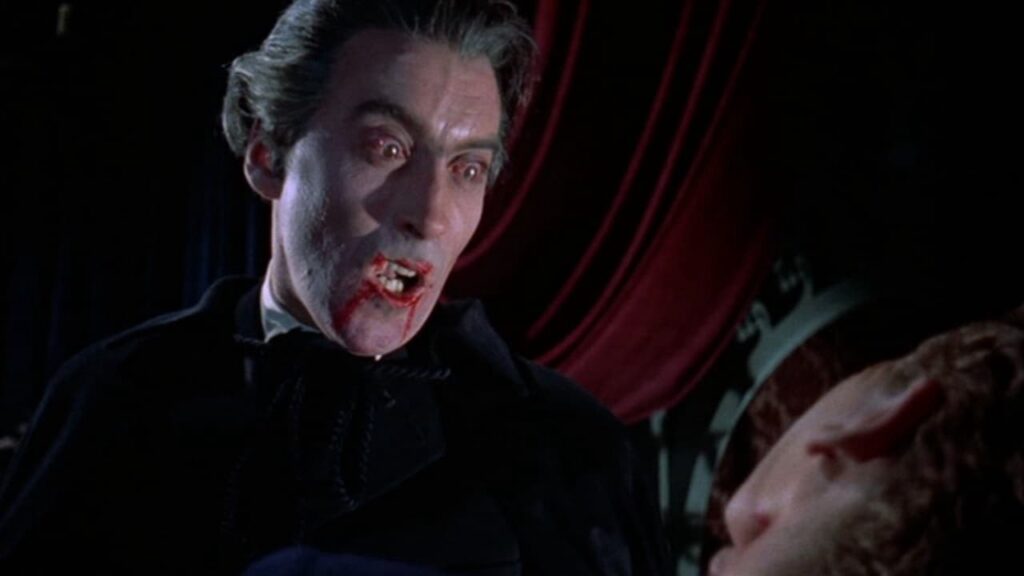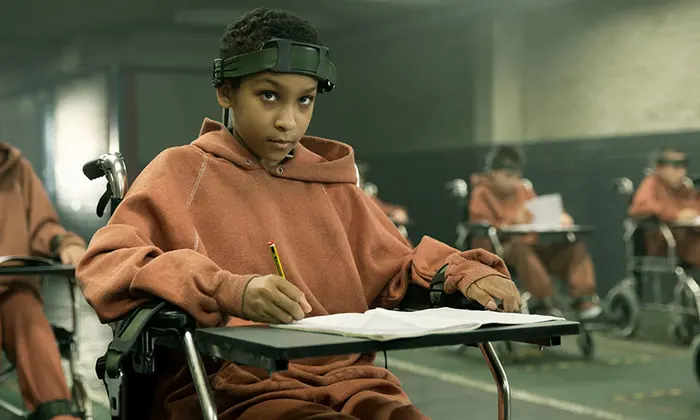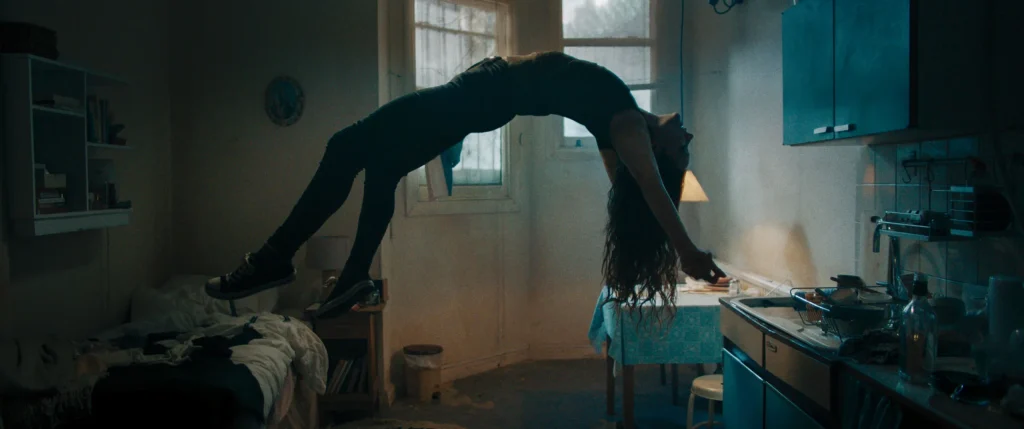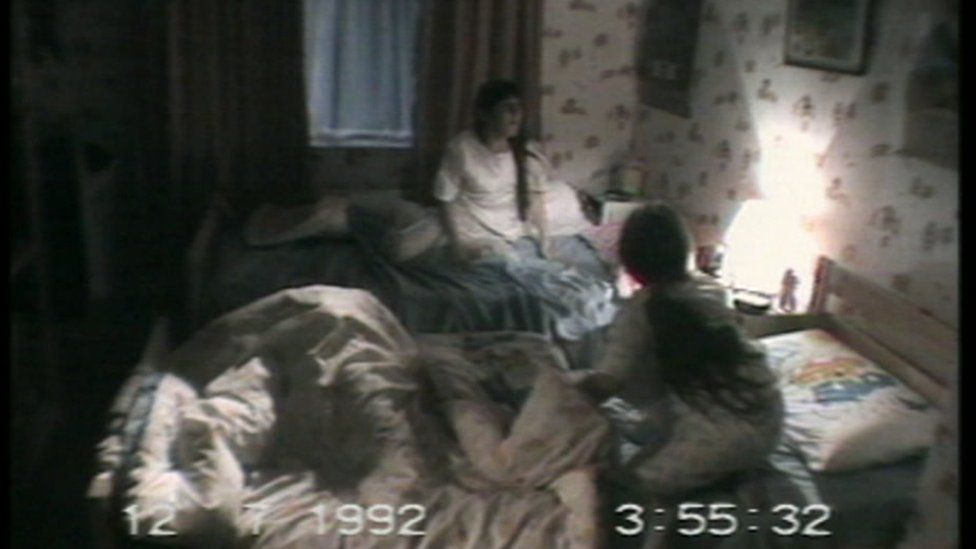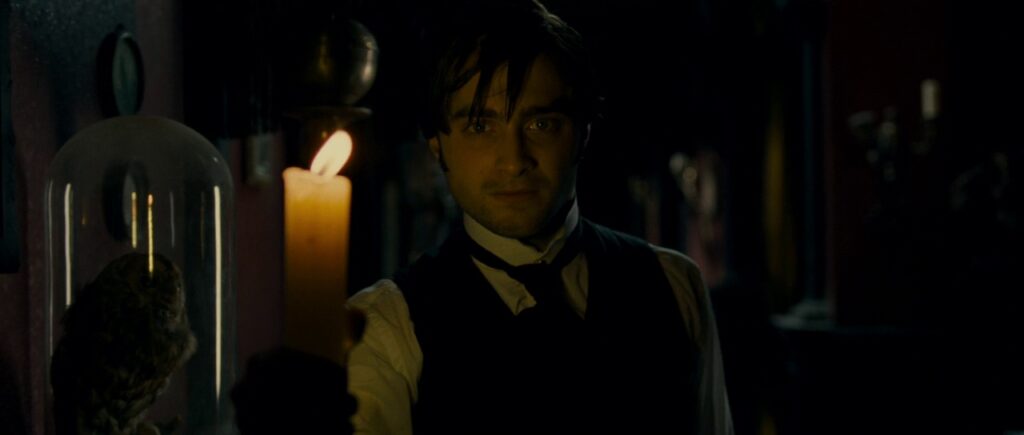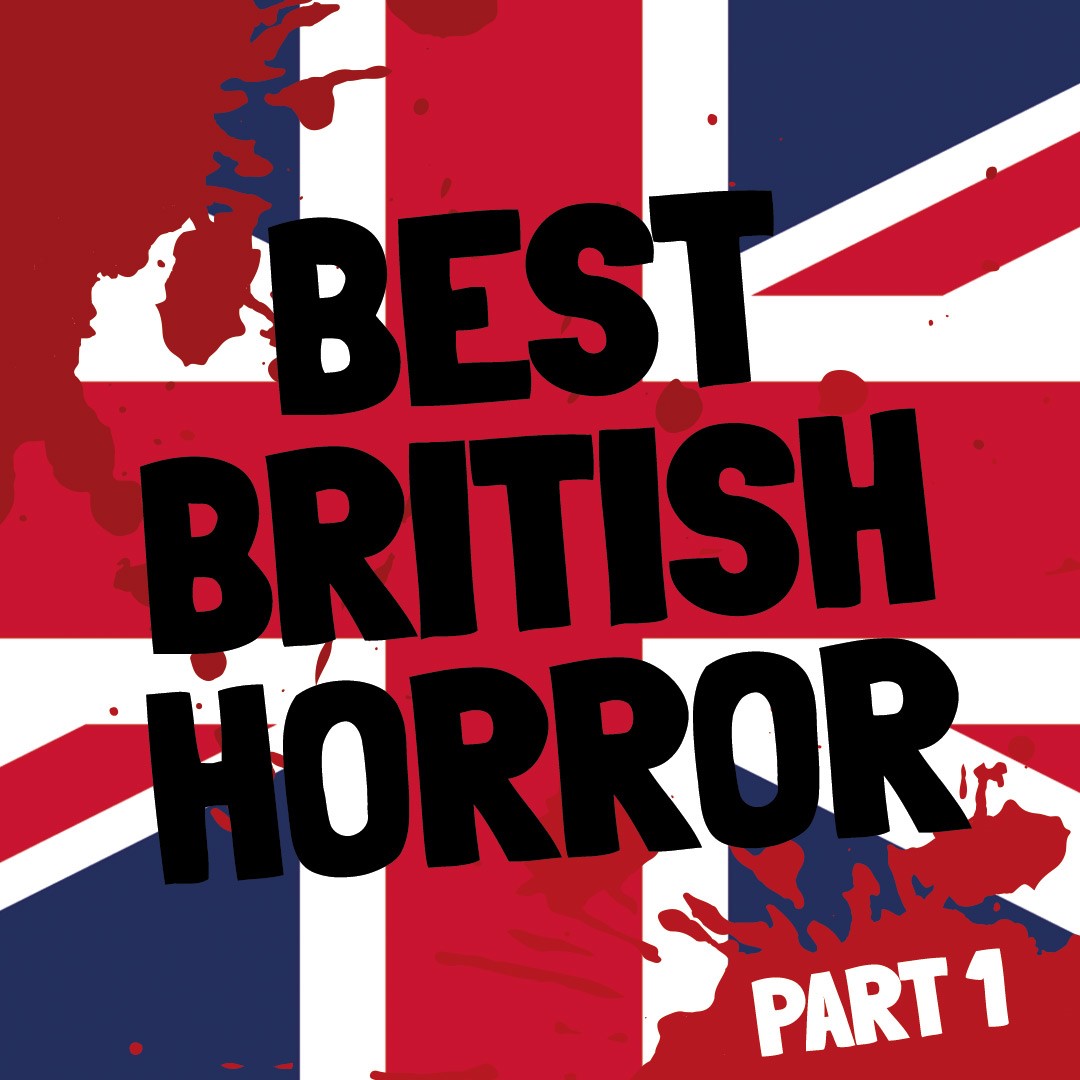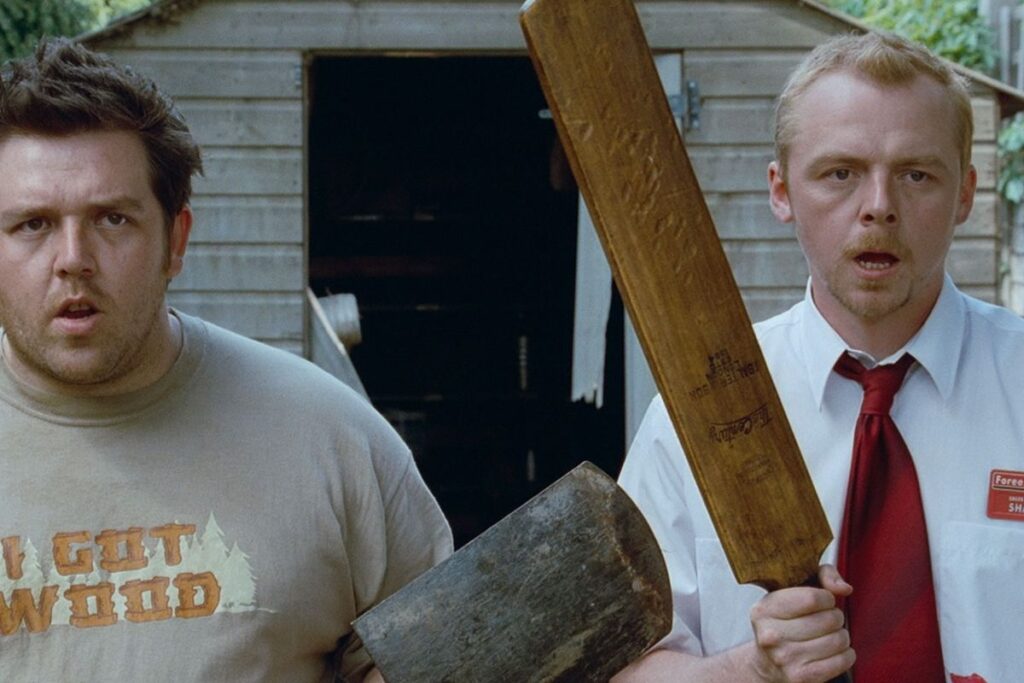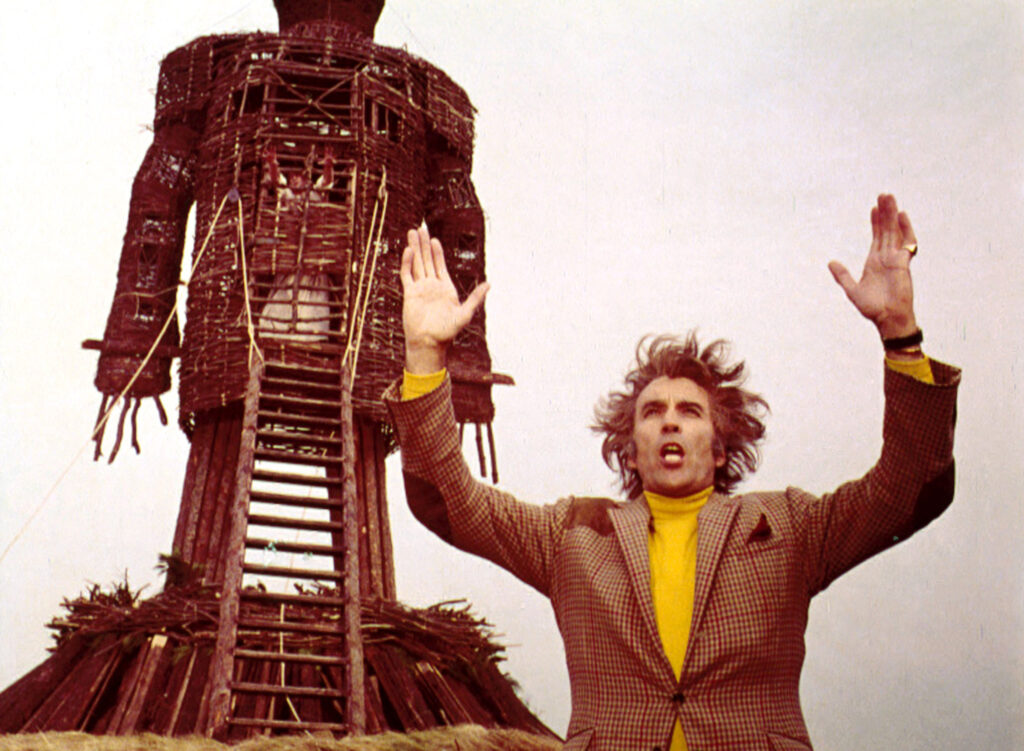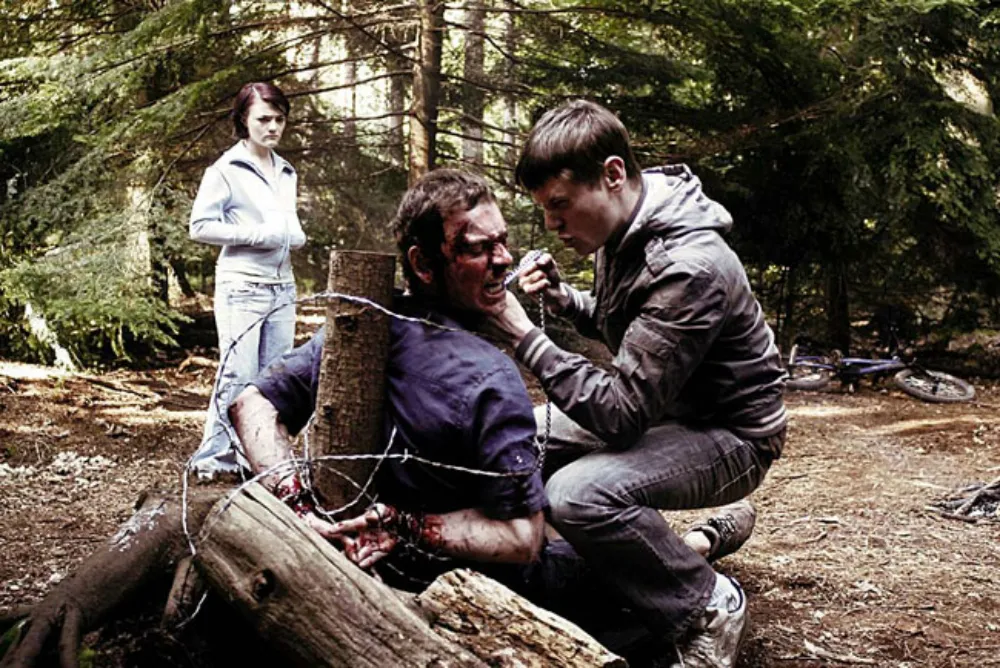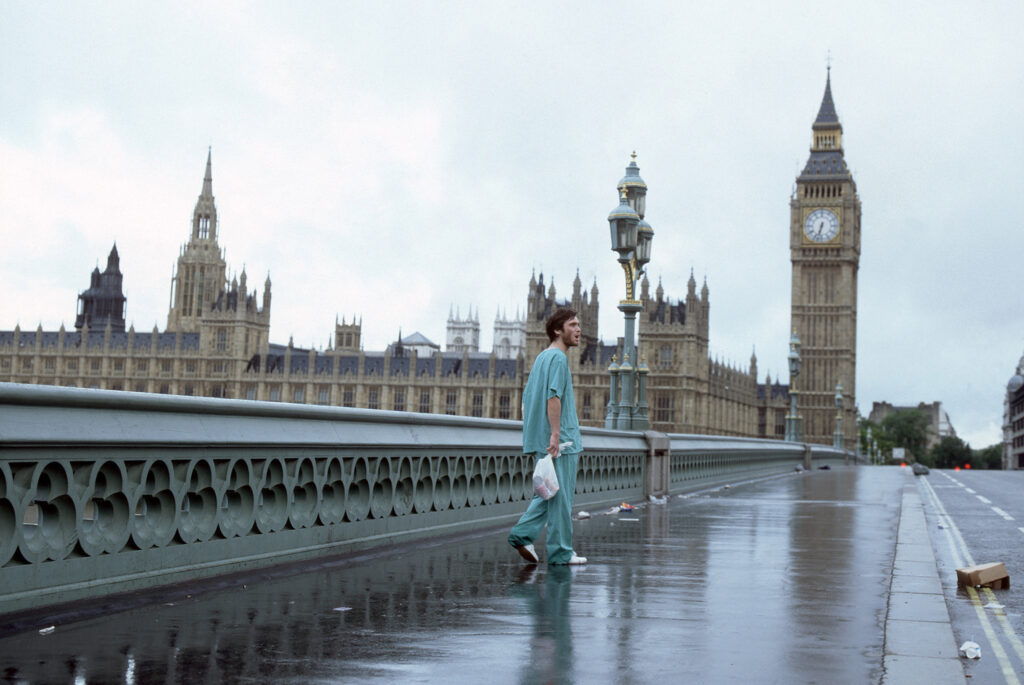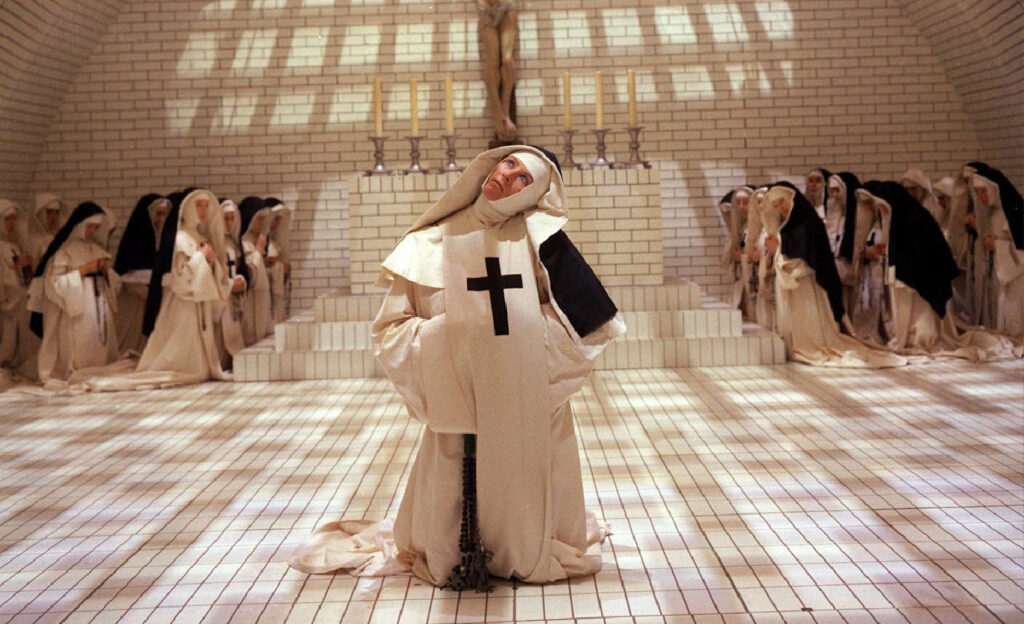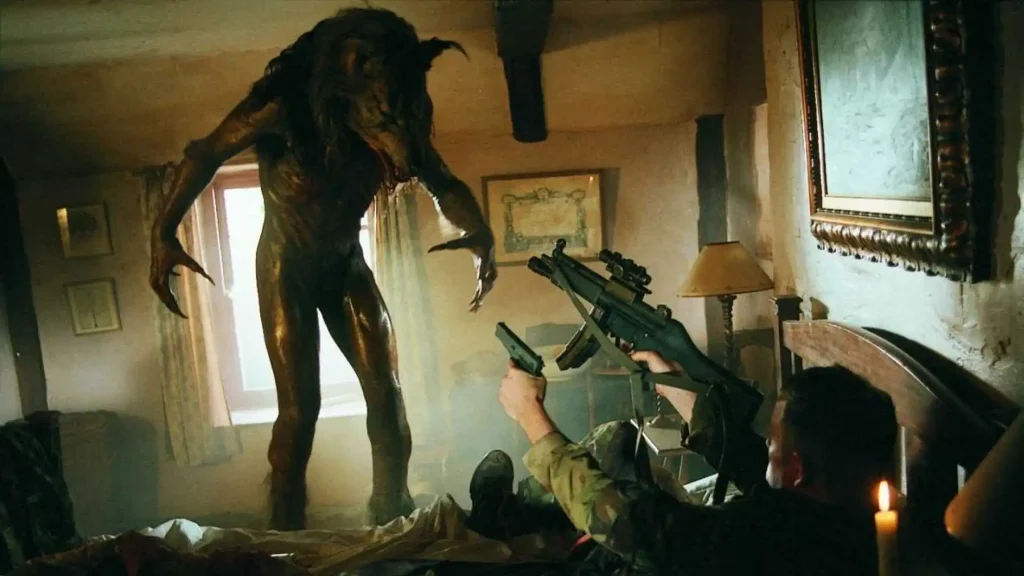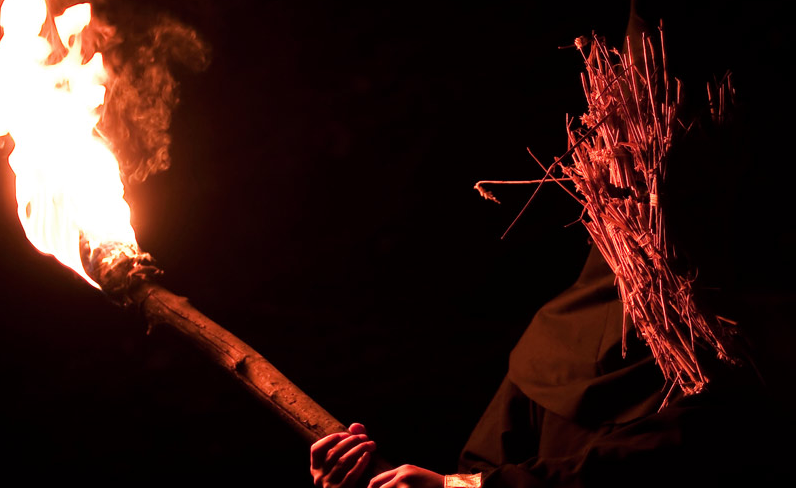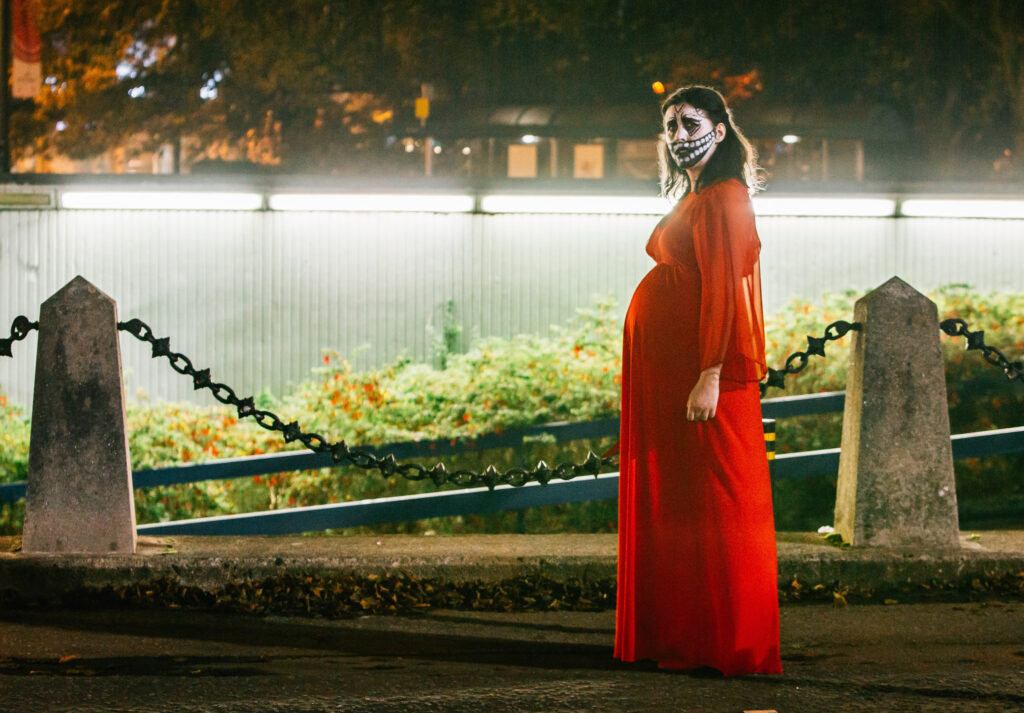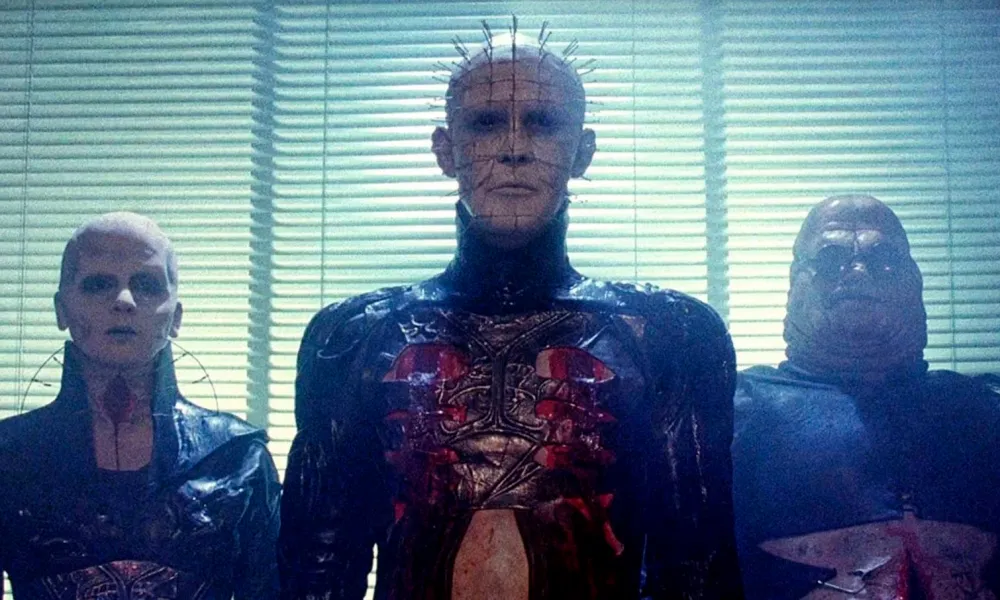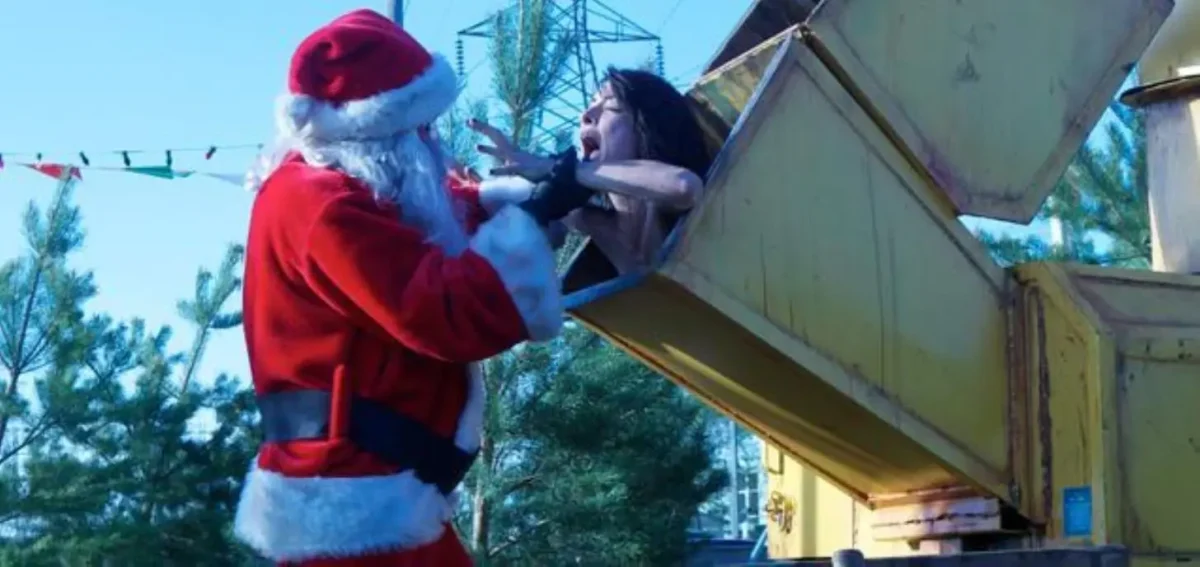
1- The rocking chair – Black Christmas (Directed by Bob Clark, 1974)
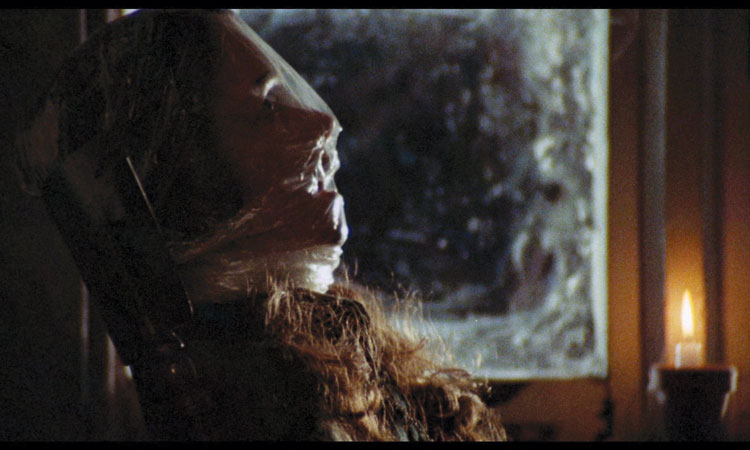
Black Christmas is a horror that remains a public favourite all these years later for great reasons. The glossy darkness of this sorority fright is brimming with a holiday essence that embraces that idyllic juxtaposition of Christmas horror. With countless kills under its belt, it’s nearly impossible to pick just one entry from Bob Clark’s seventies bloodfest. However, one is just that cut above the rest. Before the film’s crazed killer works his way through his hapless prey, he sets his sights on Clare (Lynne Griffin). Clare’s end is brutal; she is suffocated with a plastic wrap before being positioned on a rocking chair in view of the attic window for everyone to see. What works incredibly well is the subtlety of the kill. Whilst harsh, the true beauty of the act is in its imagery of a lifeless corpse rocking back and forth in view of an entire street, but no one ever notices her and she remains undiscovered…
2- Stair birth – Inside (Directed by Julien Maury & Alexandre Bustillo, 2007)
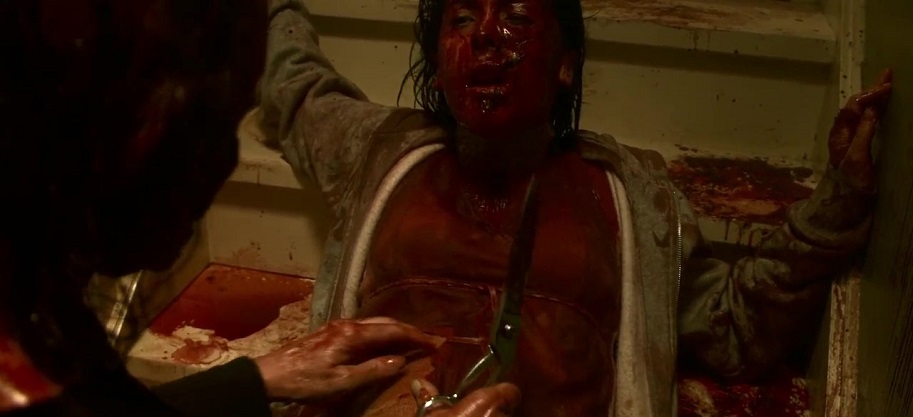
French horror has a penchant for yuletide frights, with Deadly Games (1989), Sheitan (2006), and The Advent Calendar (2021) all thriving in the extremism of French cinema whilst still featuring the spark of festivity. However, one film that leads the pack is Inside. A pregnant widow (Alysson Paradis) fending off a mad woman (Béatrice Dalle) on Christmas Eve is a fierce venture without heaps of savagery, yet Julien Maury and Alexandre Bustillo refuse to settle for a pg-13 rating. Inside defines the word merciless, particularly within the ending scene. After the house has been painted with blood and countless people have been murdered, the intruder finally gets her hands on the prize. In an act of revenge, the killer performs an impromptu and forced caesarian on a dirty staircase, with the camera not shielding away from the bloody viscera and gore as we see a fetus being plucked from a hopeless woman.
3- The wood chipper – Silent Night (Directed by Steven C. Miller, 2012)
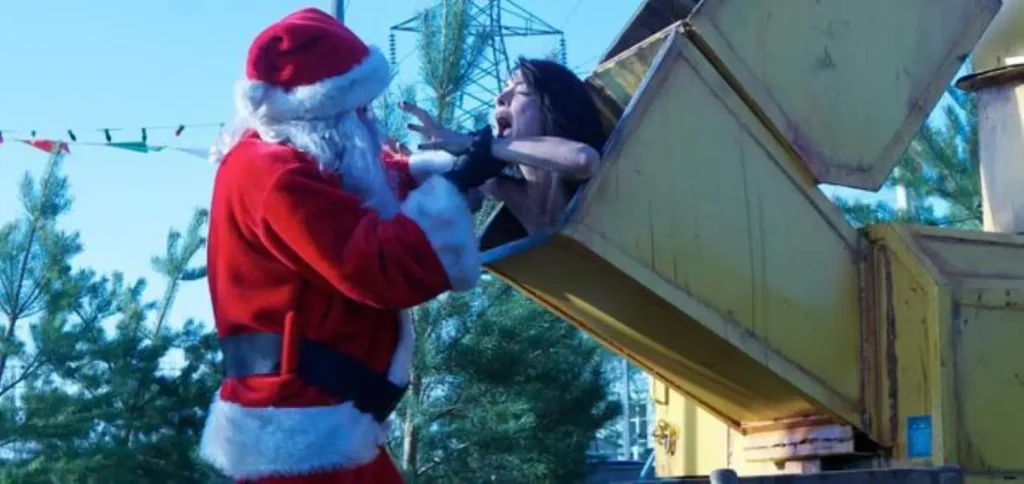
Scary Santa’s are a given for any Christmas slashfest, with Steven C. Miller’s Silent Night being no exception. As a small town begins to succumb to an evil St. Nick (Rick Skene), Sherrif Cooper (Malcolm McDowell) and Deputy Bradimore (Jaime King) have to work through a series of grizzly murders to get down to the bottom of the savage case. Films like these are exceptional at creating kills by the dozen, with Silent Night featuring everything from Christmas light electrocution to groin impalements. One kill that is the cardinal of the film is the wood chipper scene. As Santa Claus slices his way through the town, he gets his hands on a doomed victim and shoves her feet first into a woodchipper as tonnes of matter spews out the funnel!
4- Paint can experiment – Better Watch Out (Directed by Chris Peckover, 2016)
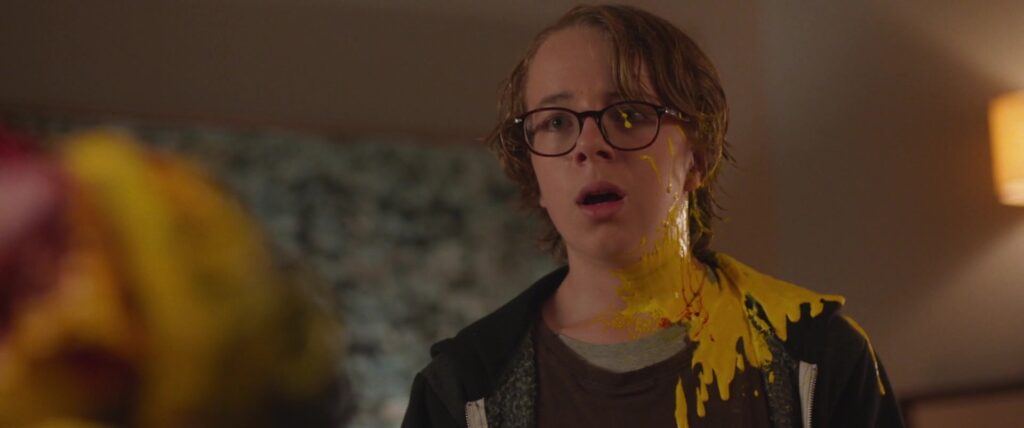
Better Watch Out (or Home Alone’s evil twin) has become a modern Christmas classic, leading the viewer in all sorts of directions before delivering a great twist that kickstarts the ‘real’ movie. After its revealed that the sweet boy Luke (Levi Miller), whom Ashley (Olivia DeJonge) is babysitting turns out to have a deadly crush on her, all hell breaks loose. A sequence of tense events leads to the film’s most untamed moment; after Ashley’s boyfriend Ricky (Aleks Mikic) arrives at the house, Luke takes it upon himself to try out a trick he saw in Home Alone where a paint can is swung toward someone. However, instead of Ricky getting a comedic bump on the head, his head is squished by the tins completely annihilating him and painting the walls in the process.
5- Death by nutcracker – Christmas Evil (Directed by Lewis Jackson, 1980)
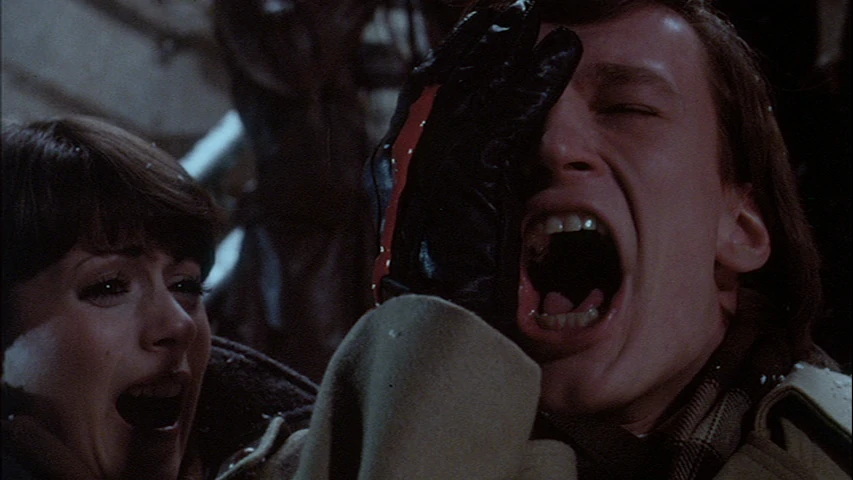
Christmas Evil follows suit with various festive horrors following a maniacal Santa on the loose. Where Lewis Jackson’s Santa-gone-wild feature differs is within the gnarly kills that play out with a keen callous energy. After a collection of events rile up evil Father Christmas, in this case also known as Harry (a disgruntled factory worker [Brandon Maggart]), he decides to go on a rampage, making a heavy steel weapon in the shape of an inconspicuous nutcracker toy. Harry arrives at a church where people on his ‘naughty’ list attend, but as a group of big-talkers block him from ticking off his Christmas list he grabs the nutcracker and rams the sharp end right into one’s eyesocket before taking a toy hatchet and smashing the blade down on two more people’s heads, leaving a bloody trail of chaos.
6- Blender whirl – Red Christmas (Directed by Craig Anderson, 2016)
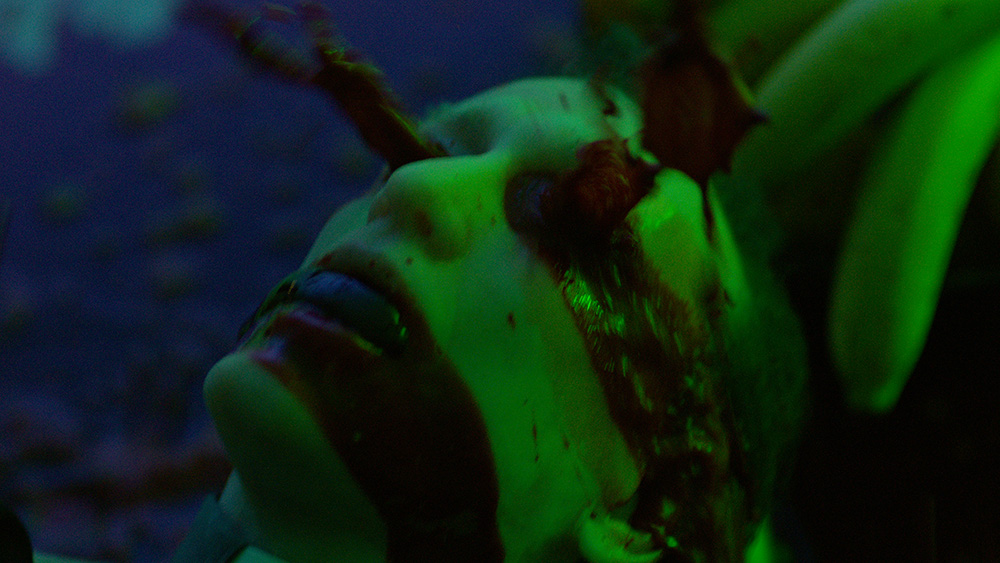
The wickedly cruel Ozploitation flick Red Christmas may have received a very mixed reception due to the film’s contentious subject matter surrounding life v. choice matters, however, the deliberately offensive horror does offer superb kills including a bear trap closing on someone’s face, an umbrella stabbing straight through the forehead, and a seatbelt strangulation. However, the most startling and original scene is when the spinning blade of a blender is met with the back of someone’s head. As the Christmas day mayhem runs through to the night, one victim is forced back onto a kitchen counter where the blender’s motor is on high speed. After what feels like forever, tensely waiting for the inevitable kill, the unbearable death is finally in action as we see the man’s eyes pool up with red as blood seeps out of every orifice as his brain is swirled around.
7- Antler hanging – Silent Night, Deadly Night (Directed by Charles E. Sellier, Jr., 1984)

Silent Night, Deadly Night erupted onto the scene with an unreal amount of hate, with the film even getting a live ‘shame on you comment directed at the film crew during the Siskel and Ebert show. And yet all these years later it’s now a cult classic must-see. The film seeks out another man-with-the-bag story, centering on Billy Chapman (Robert Brian Wilson), who after a series of unfortunate events reaches his tether. Rightfully earning its place on the list is the film’s plethora of instant-classic kills, particularly the ending of Denise (Linnea Quigley). Billy hoists Denise up in the air and meticulously and slowly plants her down on a set of sharp antlers, before leaving her like a dangling morbid ornament.
8- Mason family massacre – Santa’s Slay (Directed by David Steiman, 2005)

Akin to a tin of Quality Street, Santa’s Slay has a bit of something for everyone. Irreverent humour, plenty of vulgarity and lude comments, as well as a heaping dose of over-the-top, violence for the sake of it. It’s difficult to pin just one demise as Santa’s Slay rivets within all of the copious brutality, but there is certainly one scene that feeds right into Christmas horrors’ hands. During the first act, Santa (Bill Goldberg), makes his way down the chimney of the Mason family to massacre the lot of them. The turbulent sequence displays whole new levels of madness that thrives in its own depravity, with Santa blow torching the scalp of the matriarch before drowning her in a bowl of eggnog, using the Christmas tree topper as a shuriken, and ramming a turkey leg down a man’s throat.
9- Flesh cookies – Black Christmas (Directed by Glen Morgan, 2006)

The original Black Christmas is a genuinely frightful experience, utilising a tense atmosphere and a suspenseful mystery element to garner a foreboding sense of dread. The 2006 remake is nearly just as effective but in a totally alternative way. Glen Morgan’s retelling is the ultimate teen horror that understands its almost asinine 2000s vibe and runs with it. The film dives deep into Billy’s (Robert Mann) cruel backstory and shines a light on his barbaric ways. During the film’s goriest peak we see Billy murder his mother by batting her repeatedly with a rolling pin, going overboard with the bludgeoning. Once she is shown lifeless on the floor, he grabs a gingerbread cookie cutter and begins to carve out pieces of her skin before baking them. Billy’s last moments of freedom before prison shows him chilling at the dining table eating the ‘cookies’ with a glass of milk like a deranged Santa. Truly disgusting!
10- Jack-in-the-box – Krampus (Directed by Michael Doughtery, 2015)
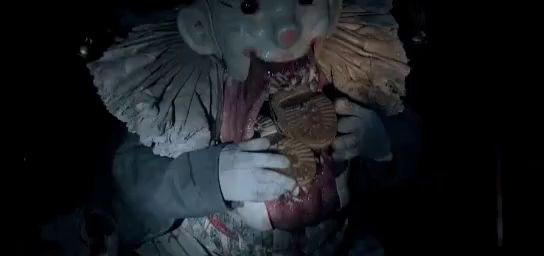
The lore of Krampus runs deep within German culture, with the anthropormorphic creature acting as an assistant to Santa, gifting disobeying children with birch rods. Many films have attempted to tell the Krampus legend, particularly A Christmas Horror Story (2015) greatly featuring some very gruesome short stories, but one horror that stands out above them all is Michael Dougherty’s Krampus, starring Toni Collette and Adam Scott. Krampus envisions a develishly grim Christmas, where Krampus’s evil sidekicks include re-animated mini but mighty gingerbreads, evil elves, and a giant jack-in-the-box with massive fangs and a horrid, glazed expression. Krampus’s standout kill includes that very jack-in-the-box as it eats a small child whole with ease.
Looking for more top horror lists and reviews? Check out our blog here..


